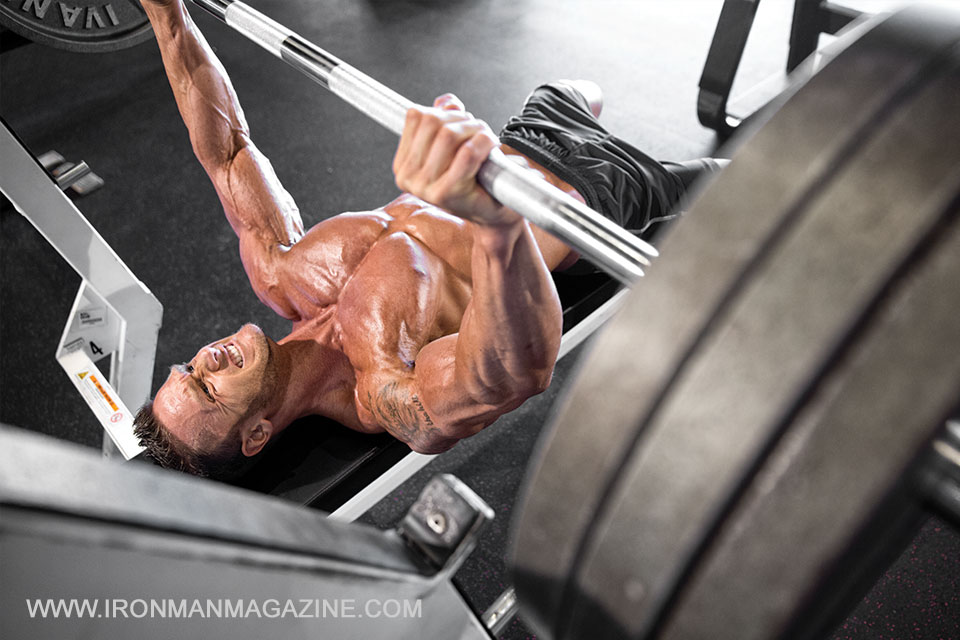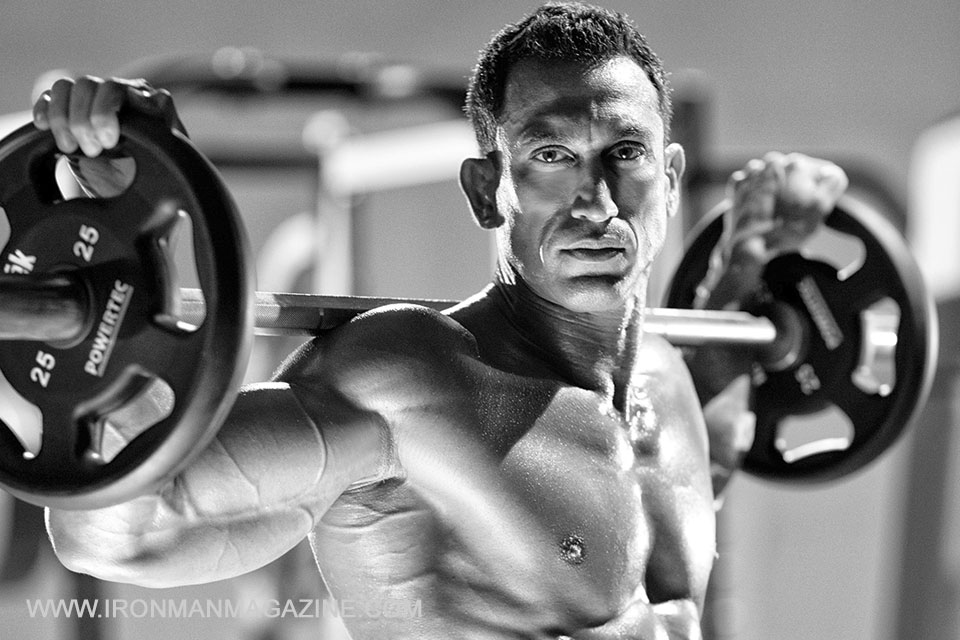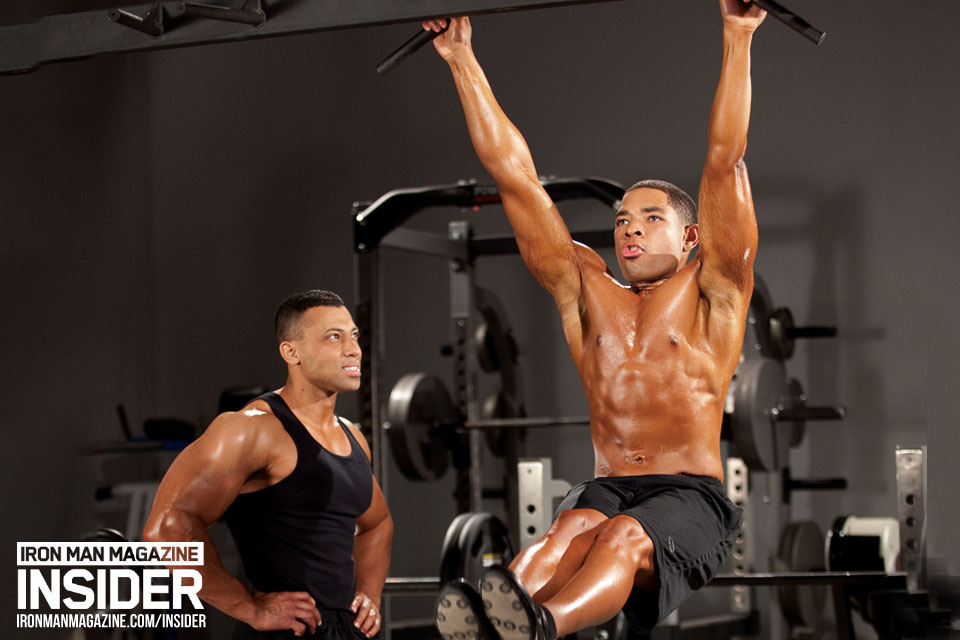


Think the bench press is merely just an upper-body lift? Think again. When you bench correctly, you’ll use your back, hips, and calves. The day after you bench, you should feel it from head to toe.
The bench press starts with a concrete and solid foundation with your feet on the floor. Think of a tripod: two feet gripping the floor like a monkey and your traps digging into the bench. Your hips are hovering on the bench rather than flush to the pad, and you are arching your back not raising your butt in the air.
Your feet need to firmly grip the floor. It does not matter if your heels are all the way down or just grazing the floor, you need to be pushing hard through your heels for the entire rep each and every time.
1. Try to bend the bar and retract your shoulder blades when taking the hand-off. This is rarely done right by most lifters. By forcing the bar out with your hands, you will engage the lats. This will take some practice.
2. Create more leg drive. You need to push through the floor at all times. This means that even as the bar is coming out of the rack, you are driving the heels hard into the floor. You need to control the weight, not let the weight control you. Don’t flatten out and stay up—hips stay up at all times.
3. The bar should travel in a small arch back toward your face after the initial press. To keep from hitting the rack, make sure you keep your eyes directly under the bar and not too far in front or behind. The key is to keep your elbows under the bar at all times to generate power. Don’t touch the bar too low on your chest. The lower it goes, the more you’ll need to press the bar back toward your face.
4. Initiate the press with heel drive through the floor. Power and momentum is generated by the feet and comes through the legs to the hips. The hips thrust and drive the weight up and back over your face.
5. Don’t press the bar too far. By locking your back in, retracting the shoulder blades, and bending the bar, you are going to take about two to three inches off your pressing length. When the weight gets heavy, people tend to let their back open up or unfurl. That’s no good. Keep it locked in from start to finish.
6. Don’t bounce the bar off your chest to gain momentum. Instead, pause the weight until motionless and then explode (see tip 4). Bouncing doesn’t promote hypertrophy nor does it create the true speed and explosion that is needed for a big bench. If you want to do touch and go with no pause, that’s fine; just graze the chest, but don’t use momentum.
7. Have someone hand the weight off to you. The tips above are only useful if you’re physically able to apply them. Handing off to yourself will make it very hard to get into position.
8. In my book 10/20/Life, I advocate benching one time a week and then a second day I call “fluff and buff.” You hit your weak points by doing lighter weight, higher reps, moving the bar faster, and squeezing the muscle with each rep.
9. Don’t go heavy every week. There is no such thing as indefinite linear progression. I advocate a lighter week, around 50 percent of your 1RM, every third week. It gives you opportunity to refine your technique and recover physically and mentally.
10. Try to get a little better each week in terms of form, approach, setup, and speed. You won’t always get stronger from week to week, but you can get better and more efficient. Effort should always be 100 percent, but intensity will vary. IM
Brian Carroll is a strength coach, elite powerlifter, and author of the training manual 10/20/Life. For more info, check out powerrackstrength.com.






















You must be logged in to post a comment Login